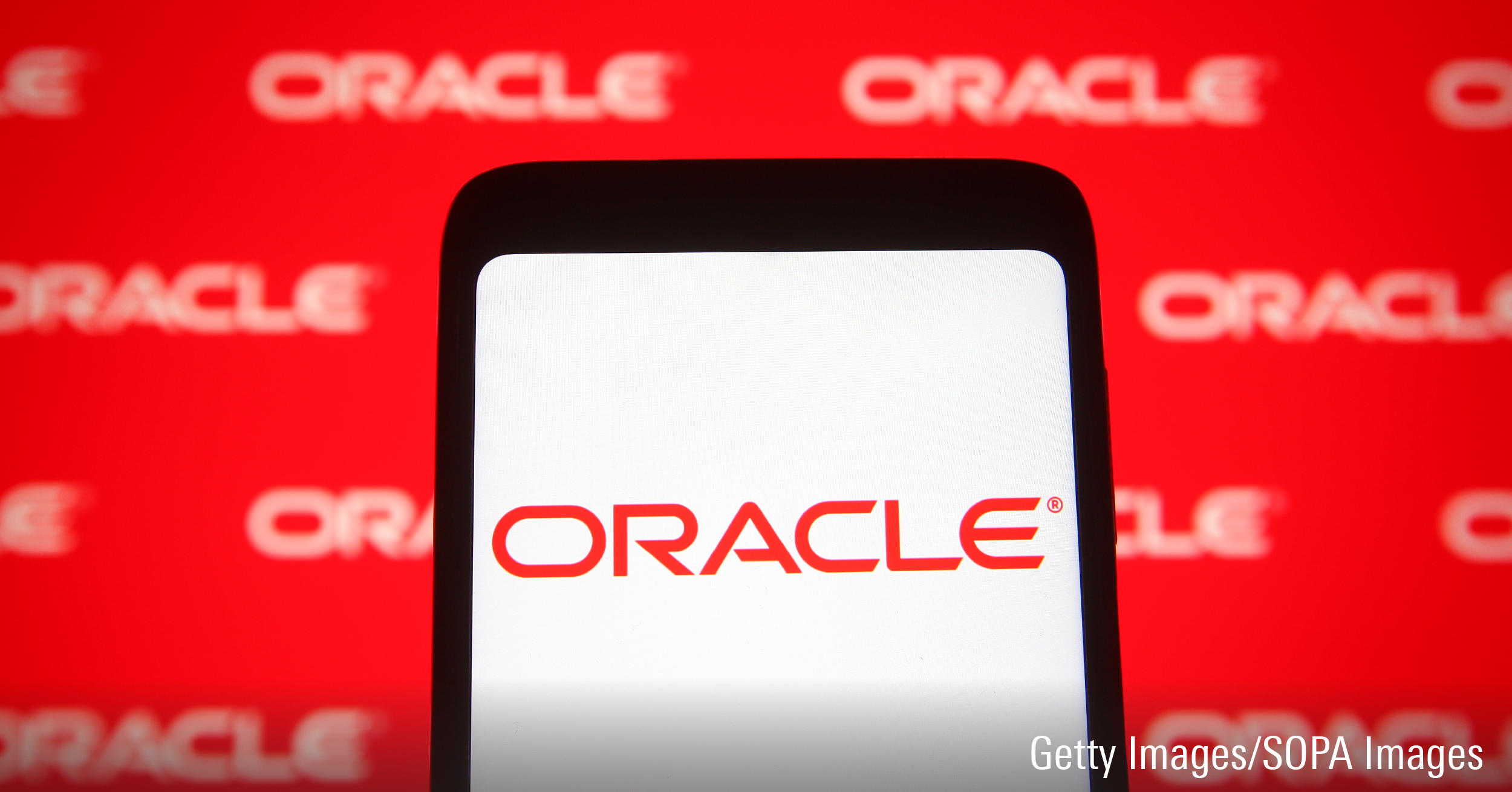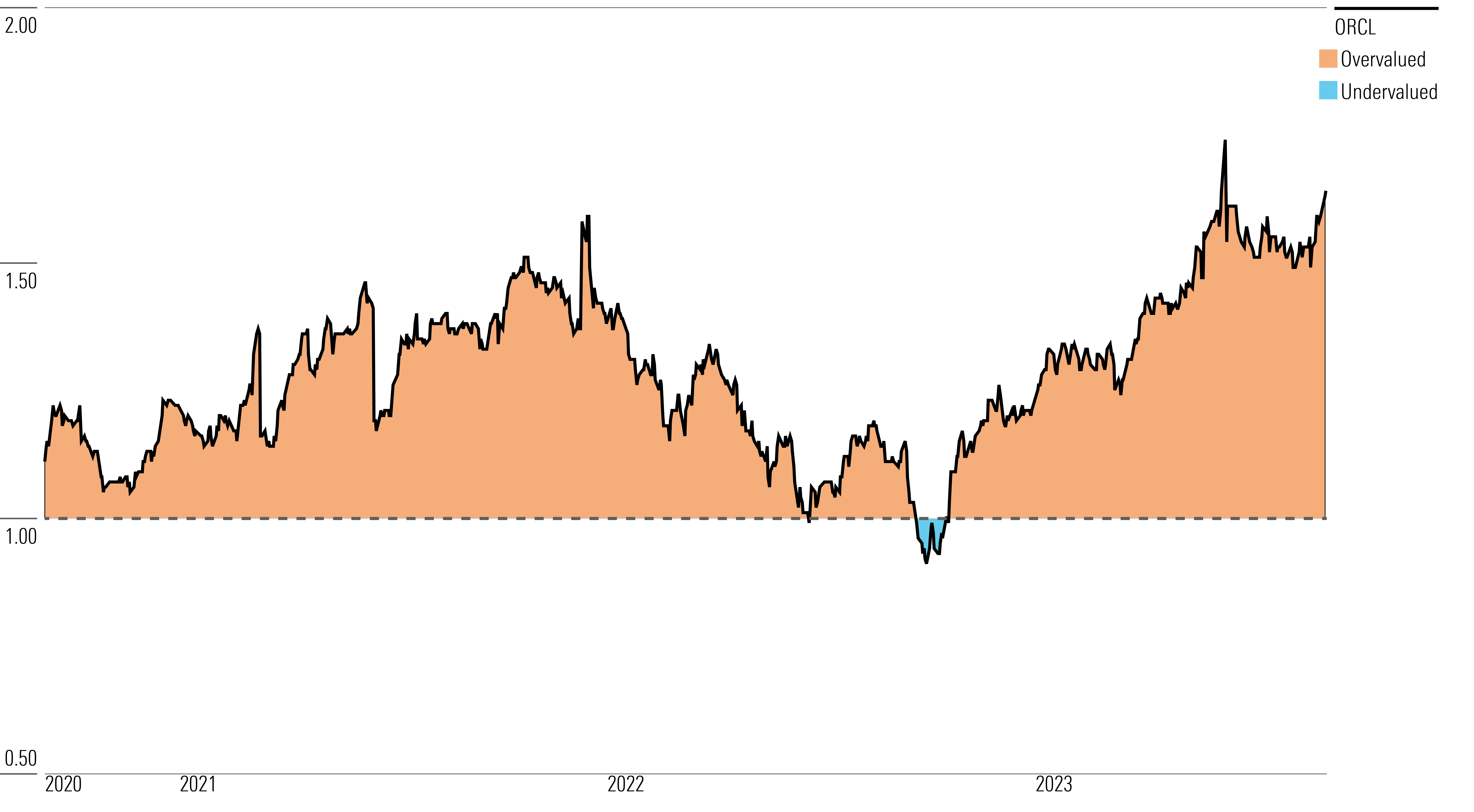After Earnings and Big Stock Drop, Are Oracle Shares a Buy?
Amid light revenue and moderate growth prospects, here’s what we think of Oracle stock.

Oracle ORCL released its fiscal first-quarter earnings report on Sept. 11 after the close of trading, and investors responded by pushing its stock down by a double-digit percentage. Here’s Morningstar’s take on what to think of Oracle’s earnings and stock.
Key Morningstar Metrics for Oracle
- Fair Value Estimate: $76.00
- Morningstar Rating: 1 star
- Morningstar Economic Moat Rating: Narrow
- Morningstar Uncertainty Rating: Medium
What We Thought of Oracle’s Q1 Earnings
- Light Revenue: Revenue was light compared with our expectations, while earnings surpassed our forecasts. Nonetheless, the market reacted significantly to the revenue miss because the stock performance for the year to date has been significantly driven by aspirations for top-line growth based on Oracle’s infrastructure as a service.
- Moderate Growth: The results reflect more moderate growth in the near term for Oracle’s cloud infrastructure business. We were already more bearish on the long-term prospects for Oracle’s cloud infrastructure business, and our view on this remains unchanged.
- Future Challenges: Our revenue compound annual growth rate forecast of 8% over the next five years is already very impressive for Oracle given its massive size. Upside in the cloud infrastructure business will have to offset the weakness we foresee in Oracle’s core revenues in enterprise resource planning and databases.
Oracle Stock Price
Fair Value Estimate for Oracle
With its 1-star rating, we believe Oracle’s stock is significantly overvalued compared with our long-term fair value estimate.
Our fair value estimate for Oracle is $76 per share, which implies a fiscal 2024 enterprise value/sales ratio of 5 times, adjusted price/earnings ratio of 15 times, and a free cash flow yield of 5%. We expect Oracle’s total revenue to grow at an 8% compounded annual rate over the next five years. Organically, we see cloud services and the license support segment driving growth but offset by hardware and services declining as a result of customers’ transition to the cloud.
In terms of profitability, gross margins in cloud services and license support would remain vulnerable in the short term as more companies switch to Oracle software as a service, which is cheaper than on-premises software—a byproduct Oracle does not mind given its expectations that SaaS customers will increase their spending with Oracle by 3 times. However, this decreasing gross margin in cloud services and license support should be partially offset by an increase in gross margin in Oracle’s hardware business, as it sheds more commodity hardware, and a decreasing mix of lower-margin services revenue. Altogether, we forecast gross margins increasing to 75% in fiscal 2028 from 73% in fiscal 2023. Overall, we expect the shifting mix to cloud should drive operating leverage, such that operating margins expand to 34% in fiscal 2028 from 27% in fiscal 2023.
Read more about Oracle’s fair value estimate.
Oracle Price/Fair Value Ratio

Economic Moat Rating
We assign Oracle a narrow moat rating based on the switching costs permeating its business. Although Oracle is an industry-leading software provider today, the company is encountering headwinds as it transitions to the cloud. In turn, we foresee less certainty about the company’s ability to retain its customers and generate excess returns on capital in the long run, which prevents us from assigning the firm with a wide moat rating.
Oracle is by and large known for its relational database, Oracle Database. While Oracle offers both on-premises database licenses and its autonomous database via IaaS, both forms display significant switching costs, in our view. More than ever, enterprises rely on data significantly to be the backbone of their business—internally and through their products. Therefore, how such data is stored and accessed becomes a critical activity of an enterprise. Changing these storage and access methods of sensitive and highly mission-critical data creates numerous headaches that aren’t dissimilar to the switching costs that we see in enterprise software, such as a significant learning curve in using new databases or significant monetary and time-related costs associated with “rewiring” how a company stores and accesses data. One can imagine the disaster that would occur if salary data was accidentally stored in database cells where employees’ emails should be stored because of a faulty migration to a competing database. The result could be salaries accidentally published across an entire organization.
An example of the stickiness of database technologies can be found in one of Oracle’s biggest competitors. Amazon provides the most recent example of the execution risks in attempting to migrate off Oracle databases: It was not until 2019 that Amazon Web Services stopped running on Oracle databases (other than for third-party applications), even though Amazon has offered its own database technology on Amazon Web Services since 2008. On Amazon Prime Day in June 2018, one of Amazon’s warehouses experienced an outage, causing 15,000 packages to have shipping delays. An Amazon internal report said that Oracle’s software would have handled the issue more efficiently.
Read more about Oracle’s moat rating.
Risk and Uncertainty
We assign Oracle a Medium Morningstar Uncertainty Rating.
The greatest risk for Oracle, in our view, stems from the shift to cloud computing and whether Oracle can effectively transition its client workloads from on-premises software into Oracle’s cloud. This transition affects every aspect of Oracle’s business, in our view, most directly eliminating the need for any customer to buy Oracle’s hardware to run on-premises databases.
But more importantly, if customers move to a competing cloud provider, they block themselves from the ability to use Oracle cloud-native software, Fusion, and the change to competing ERP software could instill a change in databases. In our view, Oracle is at risk of this transition, and the risk is exposed from all sides. In other words, customers could choose to leave Oracle’s software in order to go to best-of-breed cloud-first enterprise software, like Workday or Coupa. Or, they could choose to leave Oracle’s databases as a result of needing a more flexible database for their data needs that will need to scale in the cloud, like relational databases native to AWS or Azure. Whichever route is chosen in how a customer may leave an Oracle product, it likely leads to vulnerabilities in other Oracle products that a customer may have.
Read more about Oracle’s risk and uncertainty.
ORCL Bulls Say
- Oracle’s relational database should be able to post strong growth as customers continue to depend on its quality features, such as data partitioning, which brings incomparable load-balancing efficiency.
- Oracle’s autonomous database and IaaS were built with ease of use in mind, which could bring a significant base of first-time Oracle users to the company, strengthening top-line results.
- Oracle’s stake in TikTok Global and cloud services to TikTok’s U.S. operations should add a significant boost to Oracle’s top line and attract more “general use” cloud customers.
ORCL Bears Say
- Oracle could suffer below-average growth as customers are prompted to change databases and software providers in their transition to the cloud.
- Oracle’s cloud business could struggle to win business, as alternative SaaS and database systems leave little incentive to select Oracle IaaS.
- Concerns about coronavirus could accelerate Oracle customers’ digital transformation efforts, thus causing Oracle to lose customers at a faster pace than expected.
This article was compiled by Saaketh Tirumala.
The author or authors do not own shares in any securities mentioned in this article. Find out about Morningstar’s editorial policies.

/s3.amazonaws.com/arc-authors/morningstar/f497c984-8e67-4c32-8c6c-210934e57017.jpg)
/d10o6nnig0wrdw.cloudfront.net/04-29-2024/t_d0e8253d77de4af9ae68caf7e502e1bf_name_file_960x540_1600_v4_.jpg)
/cloudfront-us-east-1.images.arcpublishing.com/morningstar/YTLLJ3VT4NFZTCTDNZPCUR27D4.jpg)
/cloudfront-us-east-1.images.arcpublishing.com/morningstar/347BSP2KJNBCLKVD7DGXSFLDLU.jpg)
:quality(80)/s3.amazonaws.com/arc-authors/morningstar/f497c984-8e67-4c32-8c6c-210934e57017.jpg)